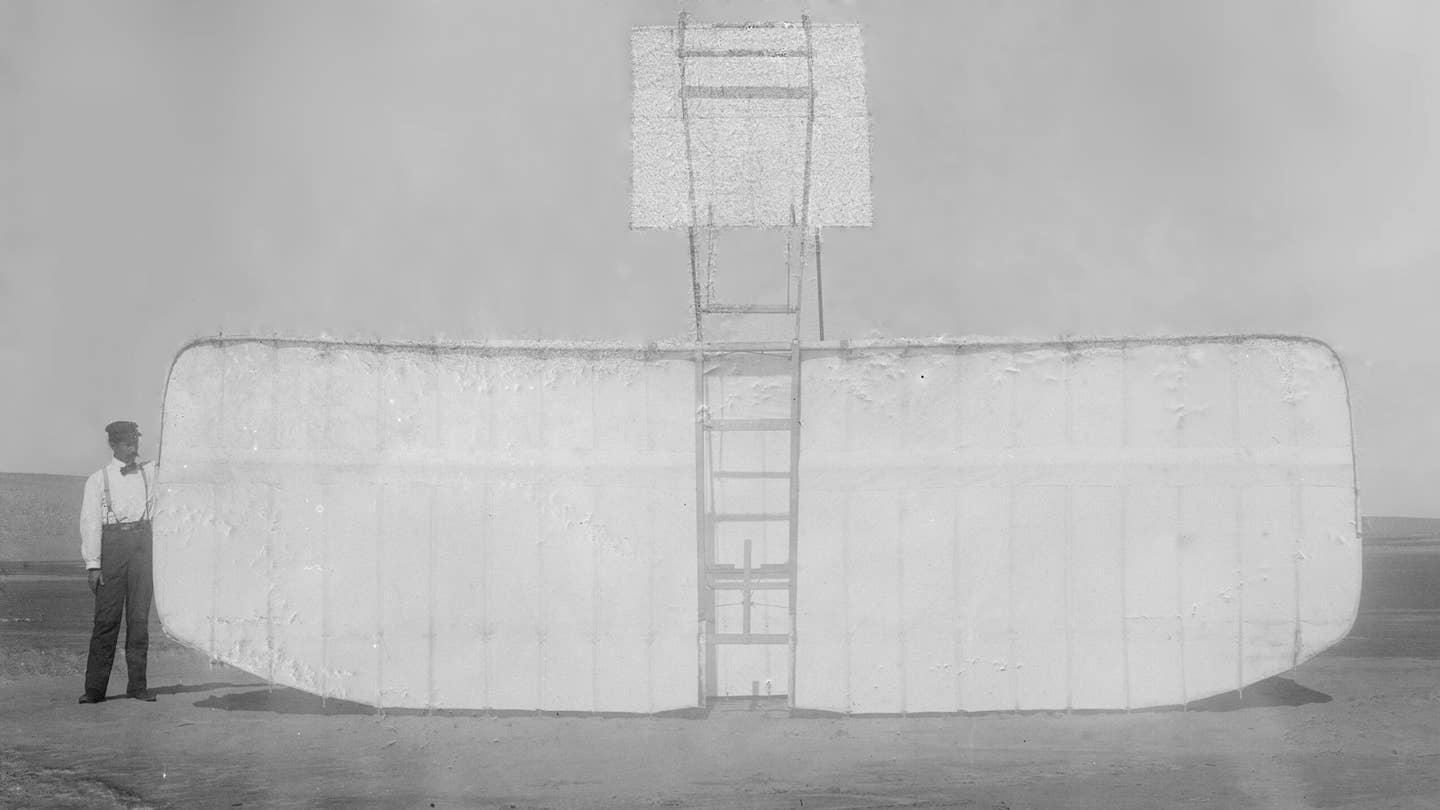The last surviving general of World War II learned to fly from Orville Wright

Orville with the 1901 glider, its nose pointed skyward; it had no tail.
SUMMARY
Ralph Corbett Smith was born in Nebraska in 1893. He had no way of knowing it a the time, but he was going to be a part of U.S. Army history in many ways. He would serve in three armed conflicts, earn one of the earliest pilot’s licenses, and would be the last general officer of World War II to pass away, long after the war’s end.
Smith gave his entire young life to the U.S. Army, and would spend more than 32 years serving in it. After graduating from college in Colorado, he joined the Colorado National Guard. The young second lieutenant embraced the power of the airplane early on, even before becoming a fully commissioned officer.
In 1903, brothers Wilbur and Orville Wright made their first powered, heavier-than-air flight at Kitty Hawk, North Carolina, but aviation in the United States still had a long way to go. By 1911, the U.S. government began experimenting with aircraft to move the U.S. mail across long distances. Those early flights were incredibly unsafe and many aviators died trying to make the system work.
But as aviation became safer, the U.S. Army began moving the mail using aircraft. The Army Signal Corps operated the first airmail routes as a means of training its early pilots. Robert C. Smith, even as a cadet, believed in the future of aviation, and took flying lessons from none other than Orville Wright himself. When he finally earned his pilot’s license, the number on it was 13, as Smith was the 13th person to earn such a credential.
After graduating from Colorado State in 1916, Smith accepted his commission into the U.S. Army Infantry, despite his flying ability. Aircraft in the Army was still under the purview of the Signal Corps at the time and the U.S. Army Air Service wouldn’t come into existence until 1918. Smith entered service in time to join Gen. John J. Pershing’s Punitive Expedition against Mexican outlaw Pancho Villa the same year he was commissioned.
Although the mission against Villa was unsuccessful, it was the first Army expedition to employ aircraft, which were used for both communications and reconnaissance. Then, the United States entered World War I in 1917. Smith transferred to the Army’s 1st Infantry Division (and later the 4th Infantry Division) that same year and arrived in France in time to see action in the 1918 Meuse-Argonne Offensive.
While deployed with the American Expeditionary Force in Europe, Smith received two Silver Stars for gallantry in combat and was wounded in the Meuse-Argonne Offensive. His wounds didn’t require him to be sent home, and he would stay in Europe on occupation duty in Germany after World War I ended. He returned to the United States, first teaching at the U.S. Military Academy and the General Staff School at Fort Leavenworth, Kansas.
That’s where Col. Smith was when the Imperial Japanese Navy attacked Pearl Harbor on Dec. 7, 1941. He was promoted to a general’s rank and would assume command of defending the Hawaiian Islands. But he wouldn’t stay on the defensive for long. His unit was attached to the Marine Corps for duty in the Pacific Theater. Although there was some snafus in their early joint operations, Smith and his division would fight with the Marines for the mountains of Saipan.
Gen. Smith was one of five Army generals relieved of their command by Marine Corps general in the Pacific, Smith was relieved for a lack of aggression. He would be relegated to stateside duty and then sent to Paris as an administrator for the duration of the war. He retired from the Army in 1948. Fifty Years later, after a lifetime of service to the defense of the U.S. he died of a lung problem at 104 years old. Ralph C. Smith was the last surviving World War II general officer.
Read more on WATM:
SHARE
